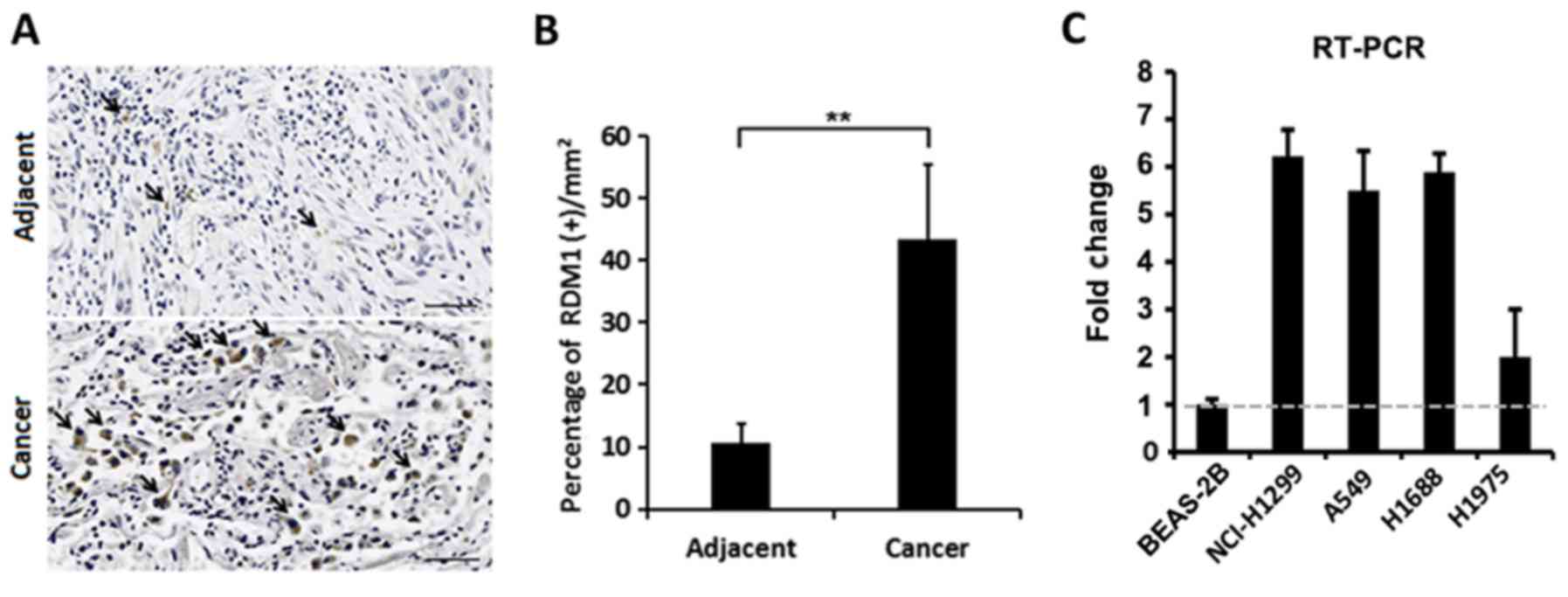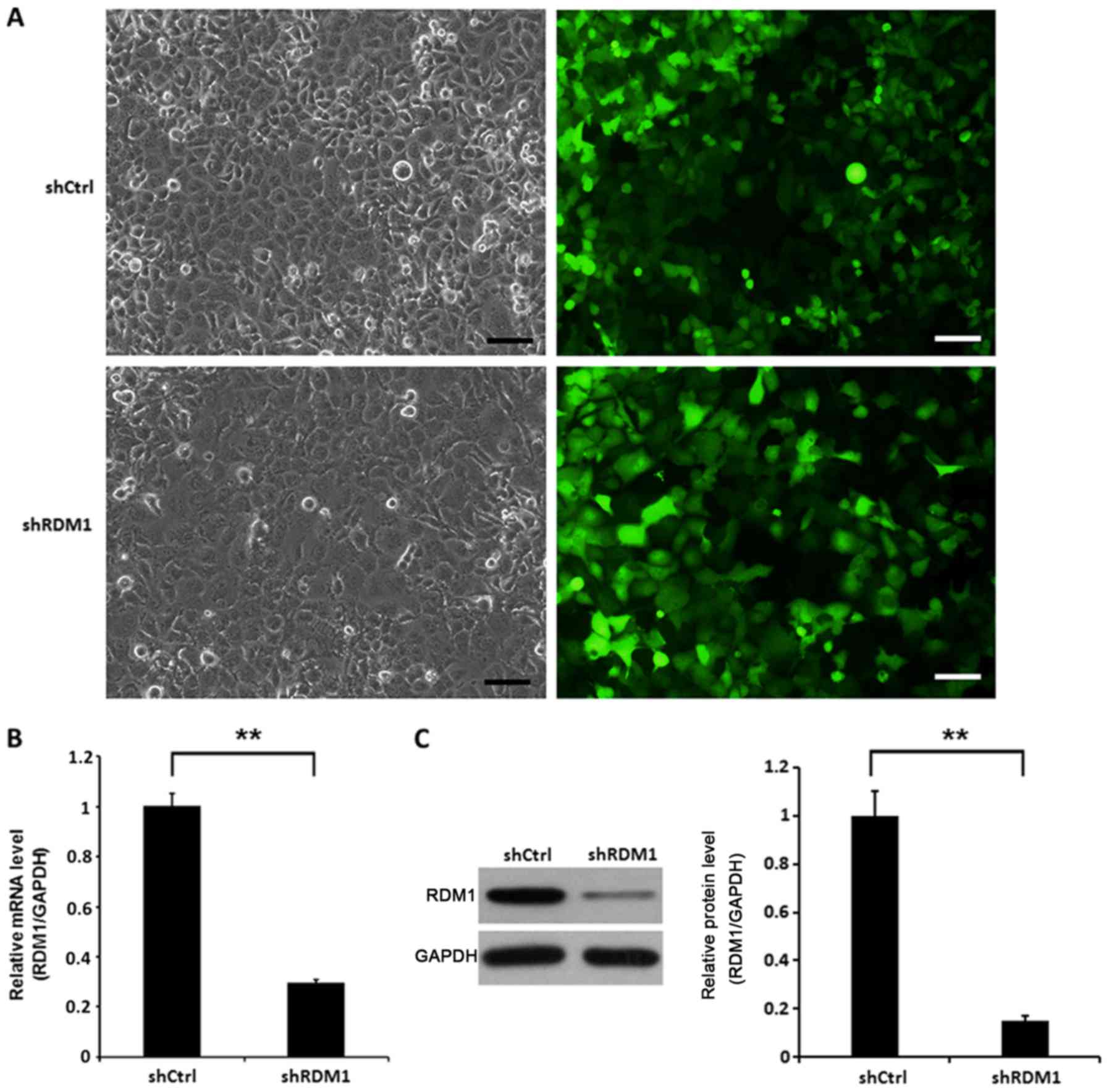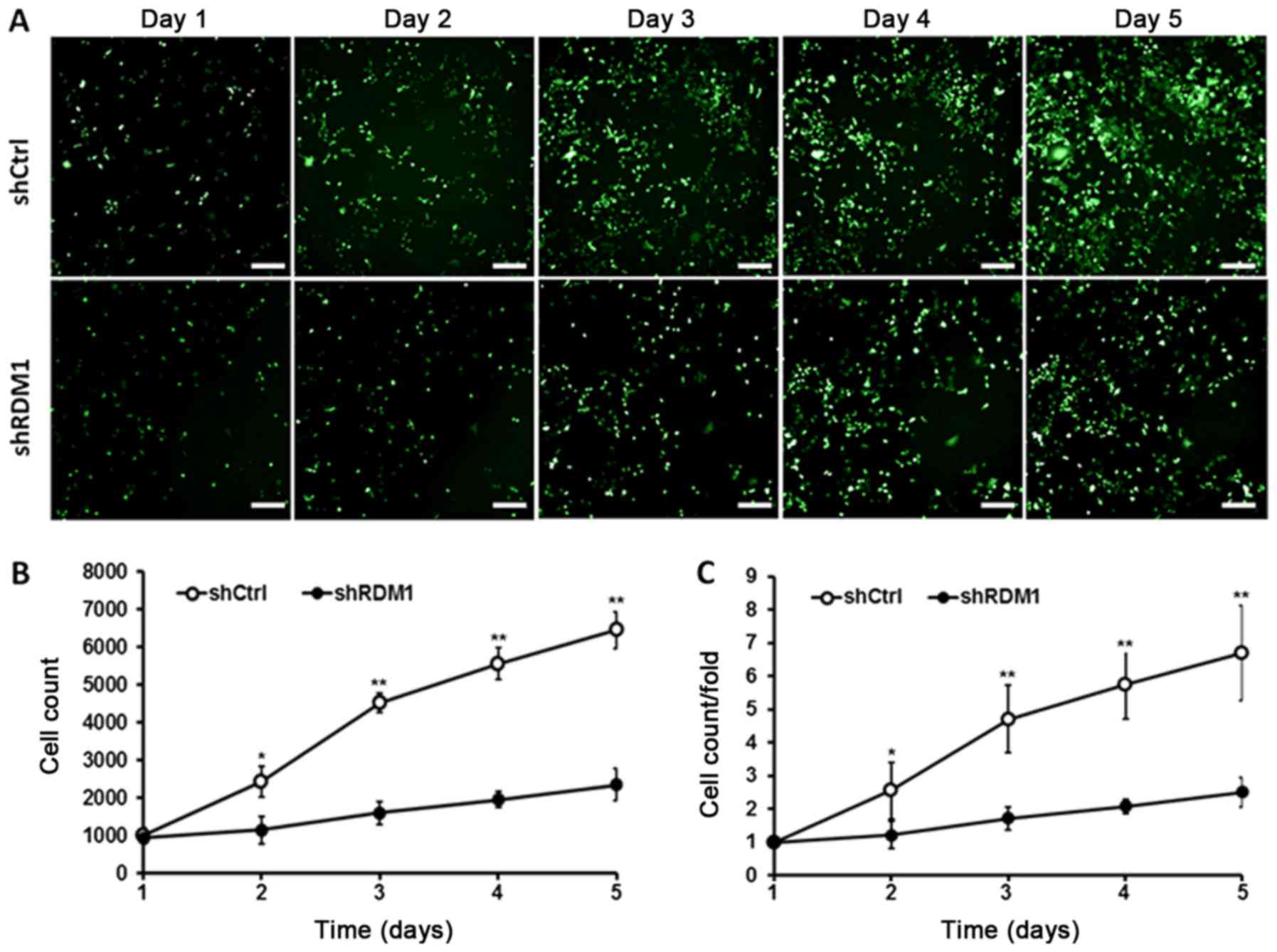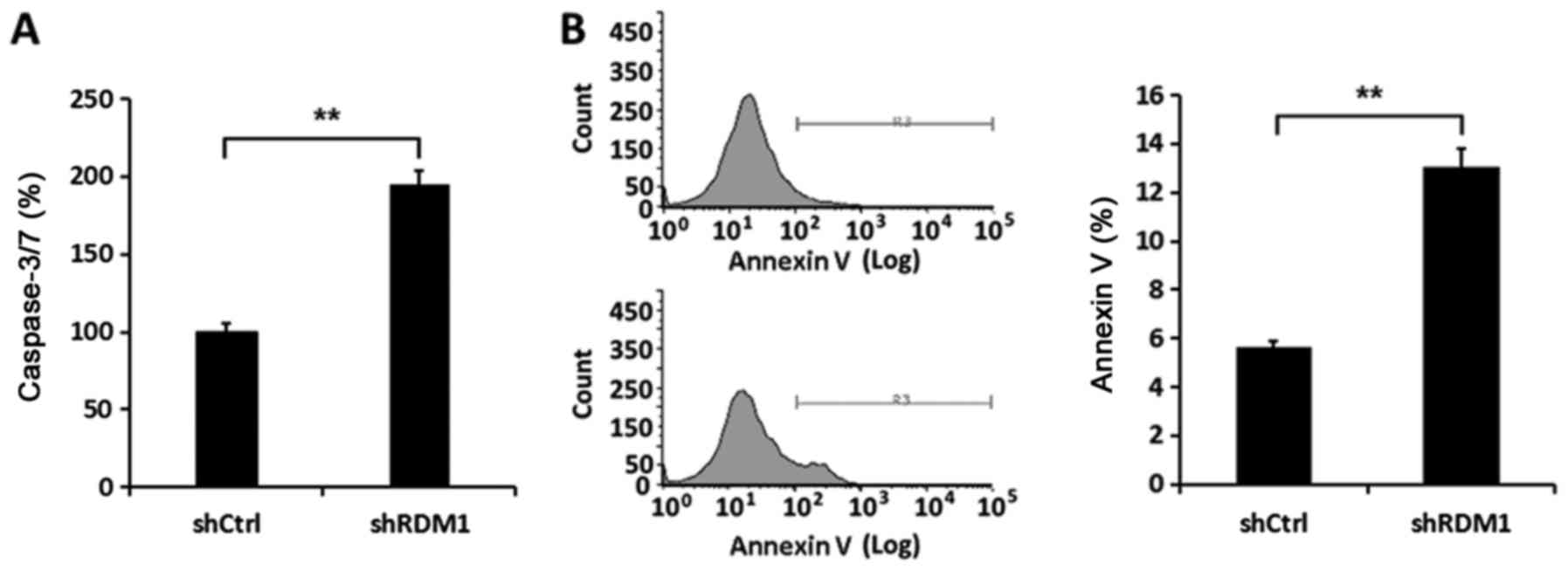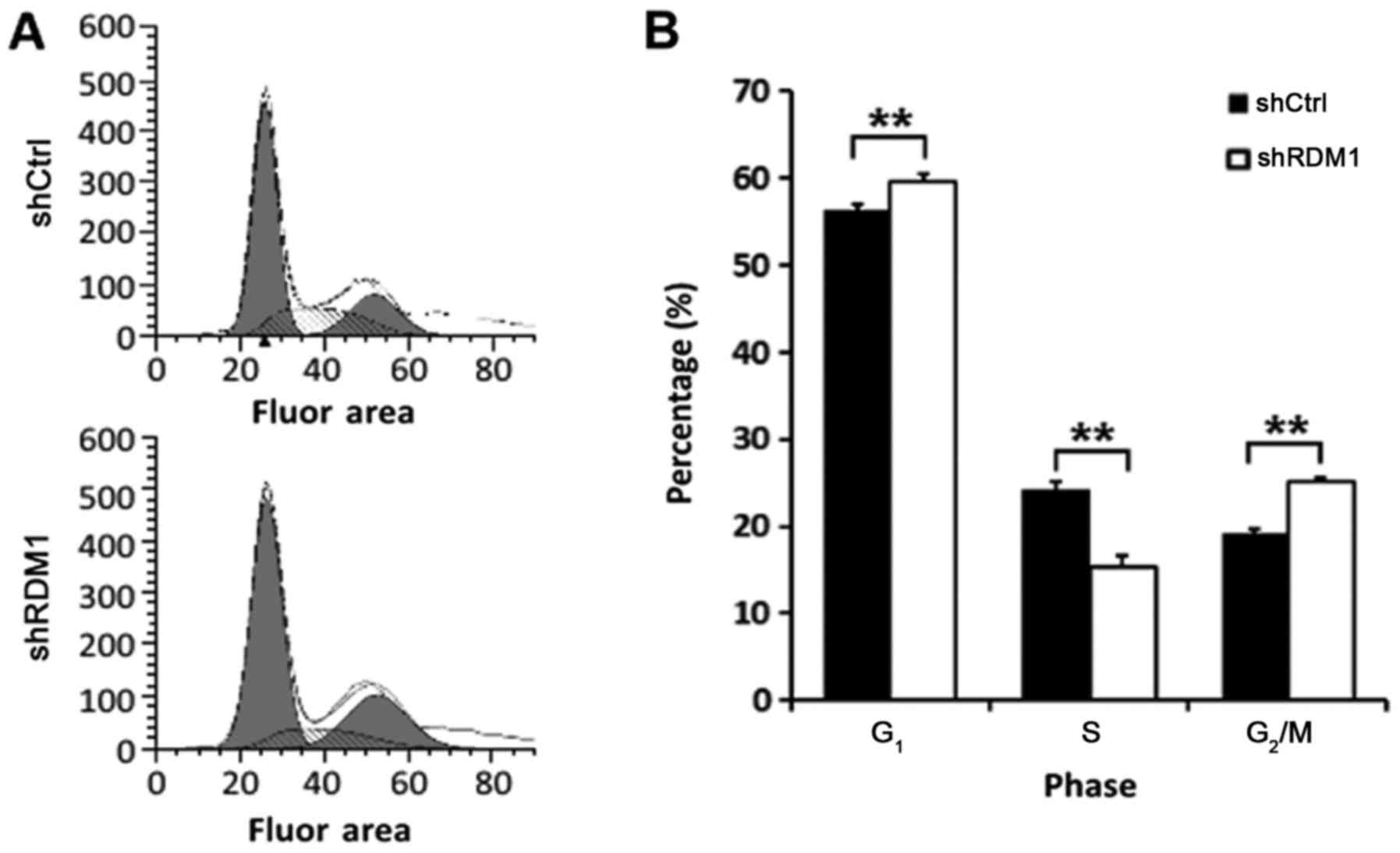|
1
|
Ridge CA, McErlean AM and Ginsberg MS:
Epidemiology of lung cancer. Semin Intervent Radiol. 30:93–98.
2013. View Article : Google Scholar : PubMed/NCBI
|
|
2
|
Torre LA, Siegel RL and Jemal A: Lung
cancer statistics. Adv Exp Med Biol. 893:1–19. 2016. View Article : Google Scholar : PubMed/NCBI
|
|
3
|
Calikusu Z, Yildirim Y, Akcali Z, Sakalli
H, Bal N, Unal I and Ozyilkan O: The effect of HER2 expression on
cisplatin-based chemotherapy in advanced non-small cell lung cancer
patients. J Exp Clin Cancer Res. 28:972009. View Article : Google Scholar : PubMed/NCBI
|
|
4
|
Chan BA and Hughes BG: Targeted therapy
for non-small cell lung cancer: Current standards and the promise
of the future. Transl Lung Cancer Res. 4:36–54. 2015.PubMed/NCBI
|
|
5
|
Shtivelman E, Hensing T, Simon GR, Dennis
PA, Otterson GA, Bueno R and Salgia R: Molecular pathways and
therapeutic targets in lung cancer. Oncotarget. 5:1392–1433. 2014.
View Article : Google Scholar : PubMed/NCBI
|
|
6
|
Maione P, Sacco PC, Sgambato A, Casaluce
F, Rossi A and Gridelli C: Overcoming resistance to targeted
therapies in NSCLC: Current approaches and clinical application.
Ther Adv Med Oncol. 7:263–273. 2015. View Article : Google Scholar : PubMed/NCBI
|
|
7
|
Salehan MR and Morse HR: DNA damage repair
and tolerance: A role in chemotherapeutic drug resistance. Br J
Biomed Sci. 70:31–40. 2013. View Article : Google Scholar : PubMed/NCBI
|
|
8
|
Lieberman R and You M: Corrupting the DNA
damage response: A critical role for Rad52 in tumor cell survival.
Aging. 9:1647–1659. 2017.PubMed/NCBI
|
|
9
|
Lieberman R, Pan J, Zhang Q and You M:
Rad52 deficiency decreases development of lung squamous cell
carcinomas by enhancing immuno-surveillance. Oncotarget.
8:34032–34044. 2017. View Article : Google Scholar : PubMed/NCBI
|
|
10
|
Rajaee-Behbahani N, Schmezer P, Risch A,
Rittgen W, Kayser KW, Dienemann H, Schulz V, Drings P, Thiel S and
Bartsch H: Altered DNA repair capacity and bleomycin sensitivity as
risk markers for non-small cell lung cancer. Int J Cancer.
95:86–91. 2001. View Article : Google Scholar : PubMed/NCBI
|
|
11
|
Spitz MR, Wei Q, Dong Q, Amos CI and Wu X:
Genetic susceptibility to lung cancer: The role of DNA damage and
repair. Cancer Epidemiol Biomarkers Prev. 12:689–698.
2003.PubMed/NCBI
|
|
12
|
Qiao GB, Wu YL, Yang XN, Zhong WZ, Xie D,
Guan XY, Fischer D, Kolberg HC, Kruger S and Stuerzbecher HW:
High-level expression of Rad51 is an independent prognostic marker
of survival in non-small-cell lung cancer patients. Br J Cancer.
93:137–143. 2005. View Article : Google Scholar : PubMed/NCBI
|
|
13
|
Benson FE, Baumann P and West SC:
Synergistic actions of Rad51 and Rad52 in recombination and DNA
repair. Nature. 391:401–404. 1998. View
Article : Google Scholar : PubMed/NCBI
|
|
14
|
Hamimes S, Arakawa H, Stasiak AZ, Kierzek
AM, Hirano S, Yang YG, Takata M, Stasiak A, Buerstedde JM and Van
Dyck E: RDM1, a novel RNA recognition motif (RRM)-containing
protein involved in the cell response to cisplatin in vertebrates.
J Biol Chem. 280:9225–9235. 2005. View Article : Google Scholar : PubMed/NCBI
|
|
15
|
Hamimes S, Bourgeon D, Stasiak AZ, Stasiak
A and Van Dyck E: Nucleic acid-binding properties of the
RRM-containing protein RDM1. Biochem Biophys Res Commun. 344:87–94.
2006. View Article : Google Scholar : PubMed/NCBI
|
|
16
|
Messaoudi L, Yang YG, Kinomura A, Stavreva
DA, Yan G, Bortolin-Cavaillé ML, Arakawa H, Buerstedde JM, Hainaut
P, Cavaillé J, et al: Subcellular distribution of human RDM1
protein isoforms and their nucleolar accumulation in response to
heat shock and proteotoxic stress. Nucleic Acids Res. 35:6571–6587.
2007. View Article : Google Scholar : PubMed/NCBI
|
|
17
|
Stubbs M, McSheehy PM, Griffiths JR and
Bashford CL: Causes and consequences of tumour acidity and
implications for treatment. Mol Med Today. 6:15–19. 2000.
View Article : Google Scholar : PubMed/NCBI
|
|
18
|
Zhang F, Chen X, Wei K, Liu D, Xu X, Zhang
X and Shi H: Identification of key transcription factors associated
with lung squamous cell carcinoma. Med Sci Monit. 23:172–206. 2017.
View Article : Google Scholar : PubMed/NCBI
|
|
19
|
Goldstraw P, Chansky K, Crowley J,
Rami-Porta R, Asamura H, Eberhardt WE, Nicholson AG, Groome P,
Mitchell A, Bolejack V, et al: The IASLC lung cancer staging
project: Proposals for revision of the TNM stage groupings in the
forthcoming (Eighth) edition of the TNM classification for lung
cancer. J Thorac Oncol. 11:39–51. 2016. View Article : Google Scholar : PubMed/NCBI
|
|
20
|
Li HM, Yuan P, Yu D, Ma F, Tan WW, Feng T,
Yang J, Huang Y, Lin DX, Xu BH and Tan W: Genetic variation in DNA
repair gene RAD52 is associated with the response to platinum-based
chemotherapy in SCLC patients. Zhonghua Zhong Liu Za Zhi.
38:504–509. 2016.(In Chinese). PubMed/NCBI
|
|
21
|
Ghosh S and Krishna M: Role of Rad52 in
fractionated irradiation induced signaling in A549 lung
adenocarcinoma cells. Mutat Res. 729:61–72. 2012. View Article : Google Scholar : PubMed/NCBI
|
|
22
|
Kelley MR, Logsdon D and Fishel ML:
Targeting DNA repair pathways for cancer treatment: What's new?
Future Oncol. 10:1215–1237. 2014. View Article : Google Scholar : PubMed/NCBI
|
|
23
|
Han S, Gao F, Yang W, Ren Y, Liang X,
Xiong X, Pan W, Zhou L, Zhou C, Ma F and Yang M: Identification of
an SCLC susceptibility rs7963551 genetic polymorphism in a
previously GWAS-identified 12p13.33 RAD52 lung cancer risk locus in
the Chinese population. Int J Clin Exp Med. 8:16528–16535.
2015.PubMed/NCBI
|
|
24
|
Branzei D and Foiani M: Regulation of DNA
repair throughout the cell cycle. Nat Rev Mol Cell Biol. 9:297–308.
2008. View
Article : Google Scholar : PubMed/NCBI
|
|
25
|
Lok BH and Powell SN: Molecular pathways:
Understanding the role of Rad52 in homologous recombination for
therapeutic advancement. Clin Cancer Res. 18:6400–6406. 2012.
View Article : Google Scholar : PubMed/NCBI
|
|
26
|
Bhowmick R, Minocherhomji S and Hickson
ID: RAD52 facilitates mitotic DNA synthesis following replication
stress. Mol Cell. 64:1117–1126. 2016. View Article : Google Scholar : PubMed/NCBI
|
|
27
|
Sotiriou SK, Kamileri I, Lugli N,
Evangelou K, Da-Ré C, Huber F, Padayachy L, Tardy S, Nicati NL,
Barriot S, et al: Mammalian RAD52 functions in break-induced
replication repair of collapsed DNA replication forks. Mol Cell.
64:1127–1134. 2016. View Article : Google Scholar : PubMed/NCBI
|
|
28
|
Barlow JH and Rothstein R: Timing is
everything: Cell cycle control of Rad52. Cell Div. 5:72010.
View Article : Google Scholar : PubMed/NCBI
|
|
29
|
Sonoda E, Sasaki MS, Buerstedde JM,
Bezzubova O, Shinohara A, Ogawa H, Takata M, Yamaguchi-Iwai Y and
Takeda S: Rad51-deficient vertebrate cells accumulate chromosomal
breaks prior to cell death. EMBO J. 17:598–608. 1998. View Article : Google Scholar : PubMed/NCBI
|
|
30
|
Henning W and Sturzbecher HW: Homologous
recombination and cell cycle checkpoints: Rad51 in tumour
progression and therapy resistance. Toxicology. 193:91–109. 2003.
View Article : Google Scholar : PubMed/NCBI
|



